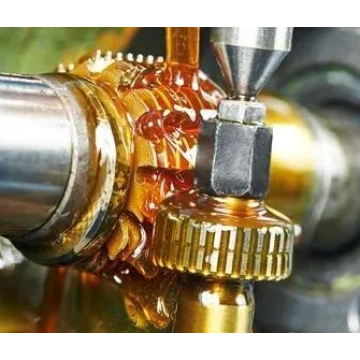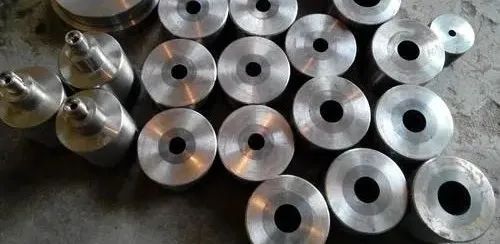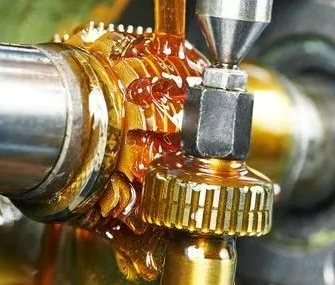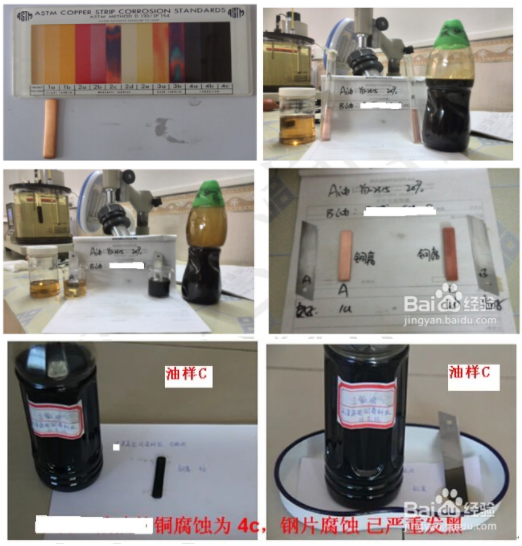 Common problems and formula improvement of carbon steel cold heading forming oil! Cold heading processing is the use of one or more impact loading at room temperature, widely used in the production of pins, screws, nuts, sleeves, riveted workpieces and other fasteners. Cold heading technology can save raw materials, reduce costs, and improve the tensile strength of the work through cold hardening, improve performance, processing efficiency is much higher than the traditional "red punching", at the same time, the need for cold heading processing molding oil also put forward high technical requirements. Q&A. 1. The workpiece is yellow and rusty, which irritates the skin of personnel. 2. Short service life of punch and die. 3. Oil produces foam. 4. The lubricating oil circulation pipeline is blocked. 5. High freezing point can not start normally in winter.
Common problems and formula improvement of carbon steel cold heading forming oil! Cold heading processing is the use of one or more impact loading at room temperature, widely used in the production of pins, screws, nuts, sleeves, riveted workpieces and other fasteners. Cold heading technology can save raw materials, reduce costs, and improve the tensile strength of the work through cold hardening, improve performance, processing efficiency is much higher than the traditional "red punching", at the same time, the need for cold heading processing molding oil also put forward high technical requirements. Q&A. 1. The workpiece is yellow and rusty, which irritates the skin of personnel. 2. Short service life of punch and die. 3. Oil produces foam. 4. The lubricating oil circulation pipeline is blocked. 5. High freezing point can not start normally in winter. 6. The workpiece is dark, blue, black, not bright

Cold heading processing originated in World War II, mainly used in the production of bullet casings, and later developed in Taiwan. Due to the limited level of technology research and development at that time, as the core of the lubricating oil required by the cold header, the additive has remained in the use of black sulfur, chlorinated paraffin, fat and active sulfur. Among them, black sulfur and fat play an anti-wear role, the corrosion is small, and the price is low; Chlorinated paraffin and active sulfur play an extreme pressure role, and this formula has been used so far, its advantages are economic, and various additives are easy to purchase; However, due to the use of a large number of chlorinated paraffins with strong activity and low price, free chlorine is produced in the process of use, and combined with oxygen and water to react into a variety of acids (corrosivity is greater than hydrochloric acid, sulfuric acid), resulting in excessive corrosivity, making the workpiece yellow, rust, corrosion equipment, shorten the service life of equipment, stimulate the skin of employees, and pollute the environment. Since 2006, the state has explicitly banned the production of chlorinated paraffins below carbon 13, and the international community has completely stopped using them. Chlorinated paraffin after oxidation to increase the acid value to produce bubbles, which is also the main reason for oil frothing, acid value is too high to produce sludge blocking oil circuit. Therefore, chlorinated paraffin is absolutely prohibited in multi-station cold heading lubricating oil. Active sulfur (vulcanized olefin) is characterized by no anti-wear properties but high copper corrosion, which is very corrosive to the copper parts of the equipment. In addition, the lubrication effect of fat need not be said more, but its use has caused the freezing point of oil in winter to be too high, and it needs heating to start normally in the north, which is very inconvenient. The formula uses black sulfur as an anti-wear agent, because its C-S bond is too firm, requiring high pressure and temperature (280℃~600℃) sulfur can be released, where does the temperature come from? It can only be obtained by the intense friction between the mold and the workpiece. The S released under high temperature and high pressure plays an anti-wear role and also corrods the workpiece and the mold, resulting in darkening, bluing and blackening of the surface. The degree of surface change is related to the alloy material and the vulcanization degree of black sulfur. Therefore, the cold heading oil tempered is basically black; And a brand of cold heading oil in Taiwan, using T405, pig oil, vulcanized olefin, wear resistance is slightly better, so the workpiece did not change color in the early stage, but the friction increased in the late process, the mold temperature rose sharply, resulting in the workpiece changing color at high temperature, especially the hexagonal processing began to blue; This formula is scientific and comprehensive according to the cold heading process at that time. The limitation of the use of additives is also the key reason for the emergence of the above problems. Case analysis According to the comparison of the data of a brand of cold heading oil in Taiwan and carbon steel cold heading compound, single agent and cold heading oil, the specific analysis is made. A: 220# Base Oil, add YD-2315 20%; B: A terminal was originally made of molding oil from Hangzhou; C: A certain terminal used molding oil produced in Taiwan D: 150# base oil, YD-1811(dark vulcanized lard) 10%+YD-3015 (vulcanized fatty acid ester) 3%+T301 (52# chlorinated paraffin) 20%+ anti-rust agent 3%; E: 220# base oil, YD-1811(dark vulcanized lard) 3%+YD-1810C(light color vulcanized lard) 6%+YD-3015 (vulcanized fatty acid ester) 3%+T301 (52# chlorinated paraffin) 20%+ anti-rust agent 3%; Note: 1 kg =9.81N; Under the action of the same experimental force, the smaller the grinding and friction, the better the extreme pressure wear resistance, and the stronger the protection of the workpiece and equipment. ① Appearance: The color of oil sample B (that is, the customer's current oil) is the heaviest, which is more similar to the Taiwan brand oil circulating in the market (oil sample C); The color of oil sample A is the lightest and golden yellow, followed by C and D, as shown in the attached figure. ② Viscosity test: See the above table for the results; ③ Copper corrosion and steel corrosion tests are as follows 4) Four-ball machine sintering load test (equipment model MS-10D microcomputer controlled electro-hydraulic servo four-ball friction testing machine), the results are shown in the table above: In SUMMARY: Through the color, smell, copper corrosion, steel corrosion and professional four-ball machine test and analysis: 1. The copper corrosion of oil sample C is the highest, which is 4c, indicating that it contains active sulfur, that is, sulfurized olefin, and the steel sheet is black, indicating that it contains a large amount of active chlorine, which is extremely harmful to the environment, equipment and staff health; The corrosivity of oil products with compound agent or single agent is level 1, which minimizes the harm to equipment and employees' skin; 2. Through the linear theory analysis of the above four-ball data chart and the wear spot values, it can be seen that the emphasis of evaluating the extreme pressure anti-wear performance of the above several cold heading forming oils should be placed on the key function interval of 1000N~3000N, that is, the linear fluctuation in the formation process of "physical-chemical oil film" of the oil, rather than simply focusing on PB and PD; From the point of view of grinding spots and friction data, under the same pressure, the smaller the grinding spots and friction, the better its practical effect will be. 3. Cold heading forming oil produced with compound or single agent mixture is ideal both in experimental data and in end use. It is suitable for processing oil enterprises with relatively single product system architecture, weak comprehensive technical strength and in transition. The recommended formula is as follows: When cold heading standard carbon steel bolts and screws, it is recommended to add 15% to 20% YD-2315; When cold heading standard carbon steel nuts and nuts, it is recommended to add 25% to 30% YD-2315; When cold heading carbon steel sleeves, rivets and other non-standard parts, it is recommended that the initial addition amount of YD-2315 is 30%; The final amount of addition depends on the customer's process and the sensitivity of the base oil. The use of single-agent blending, one requires processing oil enterprises to be very clear about the characteristics of each agent and the working principle of each process, and the other is that enterprises have independent blending ability and diversified production of products. In view of the special requirements of the process and cost control, the main agent can be appropriately increased or decreased; The above formulation system still has great room for improvement.

![]() February 13, 2024
February 13, 2024 Common problems and formula improvement of carbon steel cold heading forming oil!
Common problems and formula improvement of carbon steel cold heading forming oil!







